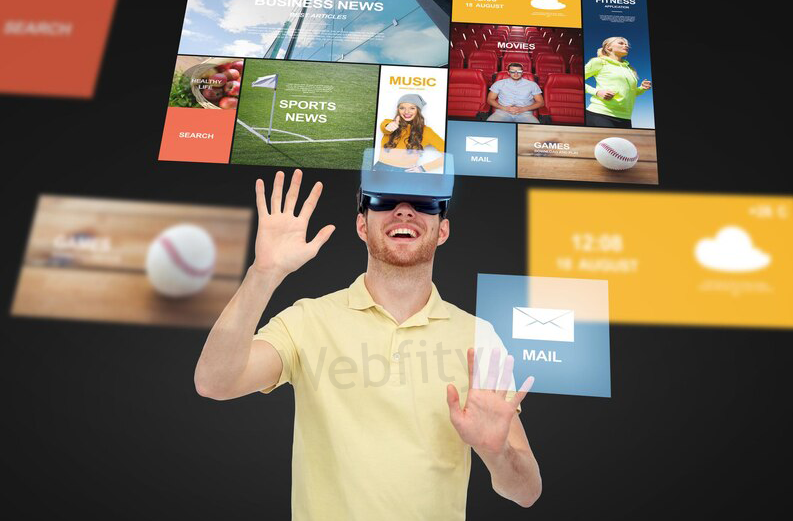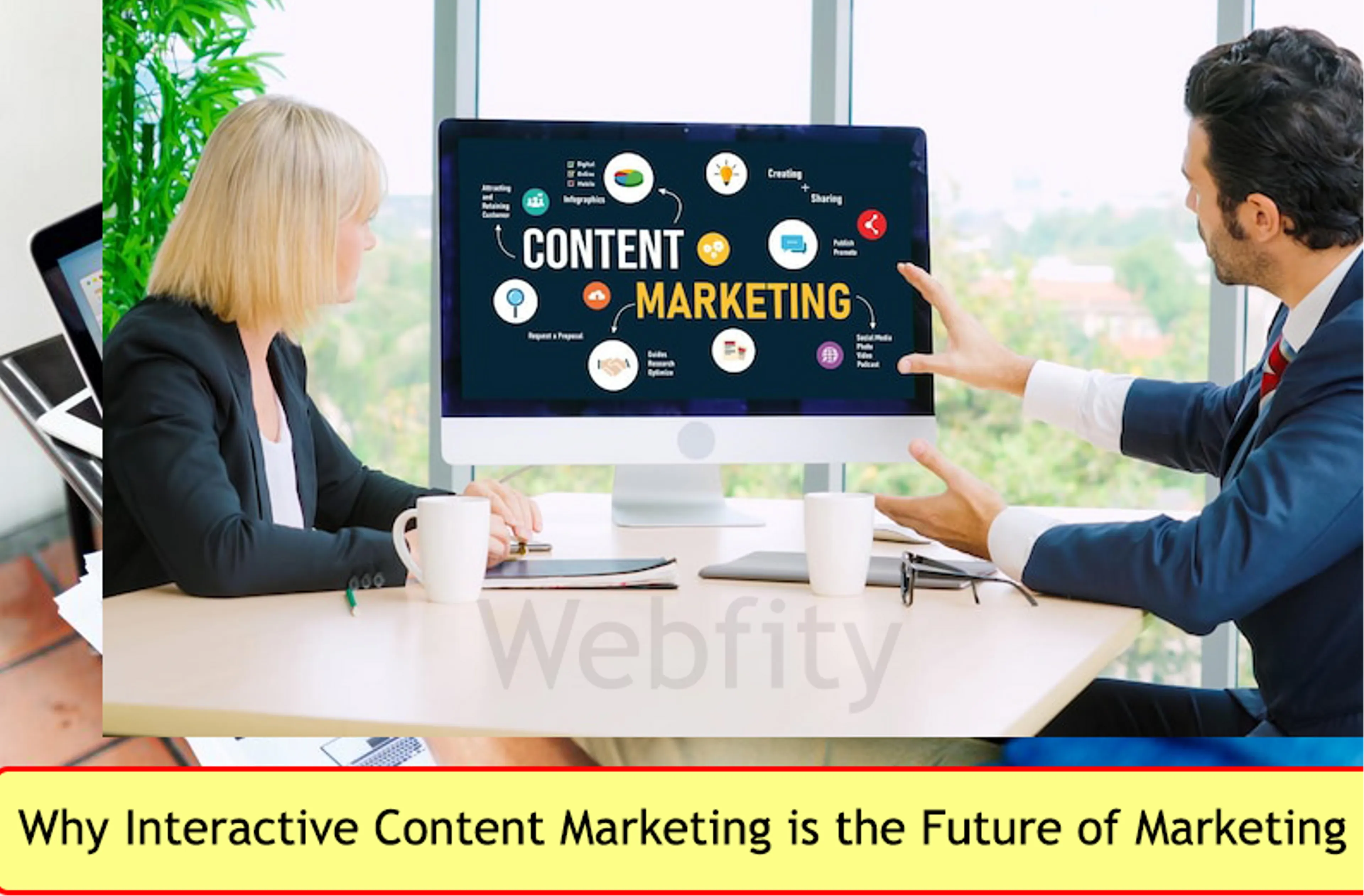In a world where consumers are bombarded with thousands of messages every day, how can marketers stand out and capture their attention? How can they create memorable experiences that engage their audience and drive them to take action?
The answer is interactive content marketing.
1 .What the heck is interactive content?
Interactive content is any type of content that requires the user's active participation, rather than passive consumption. It can be anything from quizzes, polls, surveys, calculators, games, infographics, videos, to augmented reality, virtual reality, and more.
The key difference between interactive and static content is that interactive content adapts to the user's input, behavior, or preferences, and provides personalized feedback, results, or recommendations. It creates a two-way dialogue between the brand and the user, rather than a one-way broadcast.

Types of interactive content
There are many types of interactive content, but here are some of the most common ones:
**Quizzes**
Quizzes are one of the most popular forms of interactive content. They can be used for fun, education, or lead generation. Quizzes can test the user's knowledge, personality, preferences, or needs, and provide them with a score, a result, or a recommendation based on their answers. For example, BuzzFeed's famous quizzes like "Which Harry Potter Character Are You?" or "What Kind of Pizza Are You?" are great examples of quizzes that entertain and engage the user.
**Polls**
Polls are another simple but effective form of interactive content. They can be used to gather feedback, opinions, or insights from the user. Polls can also create a sense of community and social proof by showing the user how others have voted. For example, Twitter's polls feature allows users to create and vote on polls on various topics, such as "Who will win the Oscars?" or "What is your favorite movie genre?"
**Surveys**
Surveys are similar to polls, but they usually involve more questions and more detailed answers. Surveys can be used to collect data, research, or testimonials from the user. Surveys can also provide value to the user by offering them a report, an analysis, or a reward based on their responses. For example, Typeform's surveys are designed to be engaging and conversational, and they can be used for various purposes such as customer satisfaction surveys, market research surveys, or employee feedback surveys.
**Calculators**
Calculators are another form of interactive content that can provide value to the user by helping them solve a problem or answer a question. Calculators can be used to estimate costs, savings, returns, risks, or outcomes based on the user's input. For example, HubSpot's Website Grader is a calculator that evaluates the user's website performance and provides them with a score and tips on how to improve it.
**Games**
Games are one of the most fun and immersive forms of interactive content. They can be used to entertain, educate, or persuade the user. Games can also leverage gamification elements such as points, badges, levels, or leaderboards to motivate and reward the user. For example,
M&M's Eye-Spy Pretzel game is a game that challenges the user to find hidden pretzels in a sea of M&M's candies.
**Infographics**
Infographics are visual representations of data or information that can make complex topics easier to understand. Infographics can also be made interactive by adding elements such as animations, hover effects, clickable buttons, or sliders that allow the user to explore the data or information in different ways.
For example:
The New York Times' How Y'all,
Youse and You Guys Talk
is an interactive infographic that maps
the regional variations of American English
based on the user's answers
to a series of questions.
**Videos**
Videos are one of the most engaging forms of content that can capture the user's attention and emotions. Videos can also be made interactive by adding elements such as branching scenarios, choices,questions, or calls to action that allow the user to influence the course or outcome of the video.
For example:
Netflix's Black Mirror: Bandersnatch
is an interactive video
that lets the user decide
the fate of the main character
in a choose-your-own-adventure style story.
**Augmented reality (AR)**
AR is a form of interactive content that overlays digital elements onto the real world through a device such as a smartphone or a headset. AR can be used to enhance
the user's reality with additional information, entertainment, or functionality.
For example:
IKEA Place
is an AR app
that lets the user visualize
how IKEA furniture would look like
in their own space.
**Virtual reality (VR)**
VR is another form of interactive content that immerses the user in a fully digital environment through a device such as a headset or a controller. VR can be used to create realistic simulations, fantasy worlds, or educational experiences for the user.
For example:
The Guardian's 6x9: A Virtual Experience of Solitary Confinement
is a VR experience
that puts the user in the shoes
of a prisoner in solitary confinement.
See more: How to Integrate eCommerce and Marketing Tools with a Free Website Builder
2. What are the benefits of interactive content marketing?

Interactive content marketing has many benefits for both marketers and users. Here are some of them:
Virality potential
Interactive content has a higher chance of going viral than static content because it triggers more emotions, curiosity, and social sharing among users.
People love to share their quiz results, poll opinions, survey feedback, calculator outcomes, game scores, infographic insights, video choices, or AR/VR experiences with their friends, family, or followers on social media or other platforms. This creates more exposure, awareness, and traffic for the brand.
Data collection
Interactive content also allows marketers to collect more data from users than static content. By asking users for their input, behavior, or preferences,
marketers can gain valuable insights into their audience's demographics, psychographics, needs, wants, pain points,challenges,goals,or interests. This data can help marketers segment their audience better and tailor their marketing messages accordingly.
Brand recall and loyalty
Interactive content also helps marketers create stronger brand recall and loyalty among users than static content. By providing users with personalized feedback,
results, or recommendations based on their interaction with the content, marketers can create a positive impression and connection with their audience. This can increase trust, credibility, and affinity for the brand.
The key to interactive content marketing? Putting the customer first
Interactive content marketing is not just about creating flashy or gimmicky content that grabs attention. It is about creating meaningful and valuable content that puts the customer first.
The key to successful interactive content marketing is to understand your audience well and create interactive content that aligns with their needs, wants, pain points,
challenges, goals, or interests. Your interactive content should also provide value to your audience by helping them solve a problem, answer a question, learn something new, have fun, or express themselves. Your interactive content should also have a clear purpose and goal for your brand by generating leads, sales, engagement, loyalty,
or advocacy.
3 . Examples of interactive content marketing

Here are some examples of brands that have used interactive content marketing effectively:
**Warner Bros**
To promote its movie Fantastic Beasts and Where to Find Them, Warner Bros created an interactive website that lets users explore the magical world of Newt Scamander, the protagonist of the movie. Users can interact with various creatures, locations, and characters from the movie, and learn more about them. The website also features quizzes, games, videos, and social sharing options to engage users further.
**L'Oréal**:
To help its customers find the best hair color for them, L'Oréal created an AR app called Style My Hair that lets users try on different hair colors in real time using their smartphone camera. Users can also get personalized recommendations based on their skin tone, eye color, and hair type. The app also allows users to book appointments with nearby salons, or buy products online.
**Heineken**
To raise awareness about the responsible consumption of alcohol, Heineken created an interactive video called The Experiment that shows how alcohol affects people's behavior in different situations. Users can choose between two scenarios: a night out with friends, or a job interview.They can then watch how different levels of alcohol consumption impact their performance, reactions, and outcomes in each scenario. The video also provides tips and facts about drinking responsibly.
Conclusion
Interactive content marketing is not just a trend, but a necessity in today's competitive and crowded market.
Interactive content marketing can help marketers stand out,capture attention,engage audience,collect data,and create loyalty.
However, interactive content marketing requires careful planning, designing, and testing to ensure that it provides value to both users and brands.
The key to successful interactive content marketing is to put the customer first, and create interactive content that aligns with their needs,wants,pain points,challenges,goals,or interests.
Webfity is the best free website builder for content marketing optimization today
